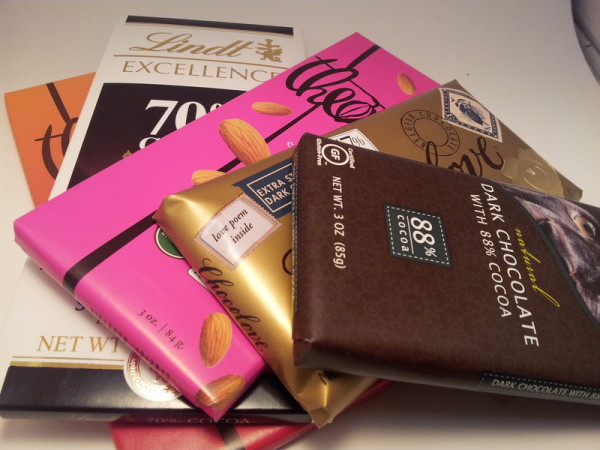Radio Archive: The Healthy Side of Chocolate
Podcast: Play in new window | Download
This show originally aired on February 9, 2024
For this episode of The Wake Up Call, just in time for Valentines Day, I chatted Dr. Andrew Litchey, ND of the Bhakti Wellness Center about some of the healthy properties of the cocoa. Of course, not just any chocolate qualifies as “healthy”, to get the most of the healthy benefits cocoa has to offer, your chocolate has to be at least 70% cocoa liquor (see below for more information).

To help get ready for the show, I’m listing here some standard definitions of various types of chocolate as well as some information on the anti-oxidants you’ll find in cocoa. Keep in mind, these definitions will vary slightly from country to country, these are the definitions set by the U.S. government.
Unsweetened Chocolate: Also known as Chocolate Liquor, as well as bitter or baking chocolate; it consists of pure roasted and ground cocoa beans and contain both the cocoa solids and cocoa butter and has a very strong chocolate flavor. Most unsweetened chocolate is about 54% cocoa butter and 46% cocoa solids.
Cocoa Powder Cocoa powder is mad by pulverizing defatted cocoa liquor. Nearly all of the cocoa butter has been removed. it is 100% pure cocoa powder. Look for cocoa powder that is not Dutched or alkalized, the Dutching process darkens the cocoa powder and takes away some of the naturally acidic flavor, but it can remove 25-75% of the anti-oxidants, depending on the processing.
Bittersweet Chocolate: Cocoa liquor with added sugar and cocoa butter. It is typically 63-72% cocoa content listed on bars, but the minimum requirement is only 35% cocoa liquor.
Dark Chocolate: Coco liquor with added sugar and cocoa butter. The required minimum by law is 15% cocoa liquor (35% in Europe). For optimal health benefit look for 70% or higher content.
Semisweet Chocolate: Dark chocolate with higher sugar content, which is generally used for baking. Typically it is in the 52-62% range.
Milk Chocolate: Chocolate liquor with cocoa butter, sugar, and milk products added. It is required by law to contain at least 10% cocoa liquor (25% in Europe) and must contain at least 12% milk solids and a bit over 3% milk fat. It can be made with either powdered or evaporated milk.
White Chocolate: Technically not a chocolate, but a confection. It is made with butter, sugar, flavorings and no cocoa solids. It should contain at least 20% cocoa butter to be called white chocolate. It typically will also contain about 14% milk solids and 3-4% milk fat.
Anti-Oxidants
Anti-oxidants rid the body of free radicals, and cocoa is naturally very high in anti-oxidants. The measure of anti-oxidants in a food is measured based on it’s Oxygen Radical Absorbance Capacity (ORAC). You can see the ORAC values of cocoa and many other foods below. The values are listed per 100 gram serving (1 ounce is about 28.3 grams).
34,396 - undutched cocoa powder
18,500 - acai berries
13,120 - dark chocolate (70%)
6,740 - milk chocolate
5,770 - prunes
3,524 - red wine (3.5 oz)
3,307 - pomegranate
2,830 - raisins
2,400 - blueberries
2,035 - blackberries
1,770 - kale
1,750 - cranberries
1,540 - strawberries
1,260 - spinach
1,220 - raspberries
980 - Brussels sprouts
949 - plums
930 - alfalfa sprouts
890 - broccoli florets
750 - oranges
739 - red grapes
710 - red bell pepper
670 - cherries
610 - kiwi
source: USDA 2007













